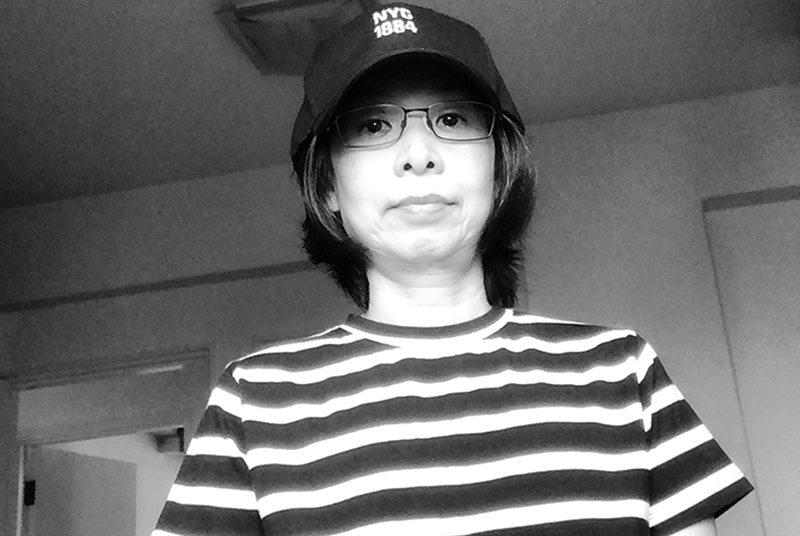
Lily Wan Wah Lau
NASA Citizen Scientist
I wish to leave a footprint in the scientific community, and becoming a NASA citizen scientist will help me do that.
My favorite citizen science projects are Stardust@home, Disk Detective, Solar Stormwatch, Planet Hunters (this project has concluded; Planet Hunters TESS has taken its place), and Supernova Hunters. These projects help unlock the secrets of the universe, and I want to be part of that.
I have contributed to a few published papers and one that’s just been submitted for publication.
The first publication I contributed to was “Stardust Interstellar Preliminary Examination I: Identification of tracks in aerogel,” published in Meteoritics & Planetary Science in 2014, with a big team from the Stardust@home project. My contribution was using an online virtual microscope to search digital imagery of the aerogel for interstellar dust particle tracks.
With Disk Detective, I was part of the team that produced a paper called "Follow-up Imaging of Disk Candidates from the Disk Detective Citizen Science Project: New Discoveries and False Positives in WISE Circumstellar Disk Surveys," which was published in The Astrophysical Journal in 2018. My contribution to this paper was checking disk candidates for companion objects and artifacts using special imaging software. I recorded and reported the location of anything I found, and marked the candidates without such companion objects or artifacts as “clear.”
Another publication I contributed to was “Disk Detective: Discovery of New Circumstellar Disk Candidates Through Citizen Science,” which was published in The Astrophysical Journal in 2016. On this project, I examined and checked the data from Wide-field Infrared Survey Explorer (WISE) to identify false positives (e.g., galaxies, nebulae, image artifacts, etc.)
With Planet Hunters TESS, I was one of the volunteers who helped to identify the two transiting planets around a G dwarf star from their light curves. A paper, “Planet Hunters TESS III: two transiting planets around the bright G dwarf HD 152843,” was later published in Monthly Notices of the Royal Astronomical Society in 2021.
I’ve also contributed to projects and publications outside of NASA, including with Solar Stormwatch.
When I am not doing science projects, I spend time on photography and making abstract art. Taking cool animal and insect pictures is a challenge, but it is what I enjoy most. I can’t ask a monkey at a zoo or a butterfly in the wild to pose for me, so I just have to have patience. I still do other types of photography, like nature and street photos, as well. And the reason why I love making abstract art so much is that it allows my brain to go wild!
I have learned to expect the unexpected. As a NASA citizen scientist, I have found that I can help NASA's professional scientists, like Dr. Marc Kuchner, to find debris disk candidates, which could be home to extrasolar planets. It was a dream come true!
Throughout the years with Disk Detective, Marc has given me many opportunities to grow from a newbie to an advanced-level classifier. I was a moderator for a while, and answering volunteers’ questions was part of my duties. For those difficult questions, in order to give the best answers, I would do some research first and gather the best information. In the process of searching for answers, I have gained new knowledge as well. I was also given a chance to vet and select potential candidates. I would never have expected that!
One thing I have learned when doing Stardust@home projects is to just have fun. With that in mind, I would not give up, even if I searched through hundreds of focus movies without finding any potential dust particles. We are guided by a quote from project leader Dr. Andrew Westphal’s father, Jim Westphal: “If you’re not having fun, you’re not doing it right.”
Star Trek series and movies! They inspired me to see beyond the Earth’s atmosphere and gaze into the universe.
Join projects with a curious mind. Expect the unexpected. You might be the discoverer of an exoplanet, an asteroid, or even the elusive ripples of spacetime! Just dive into a project, have fun, and leave your footprint in science. Remember to ask questions in a forum when you feel lost. Be patient, and don’t give up if you don’t find something right away.
Michio Kaku and Stephen Hawking. They helped open my eyes to the universe and beyond.
Visit the complete collection of NASA citizen science projects and start contributing today!
Planetary science is a global profession.

